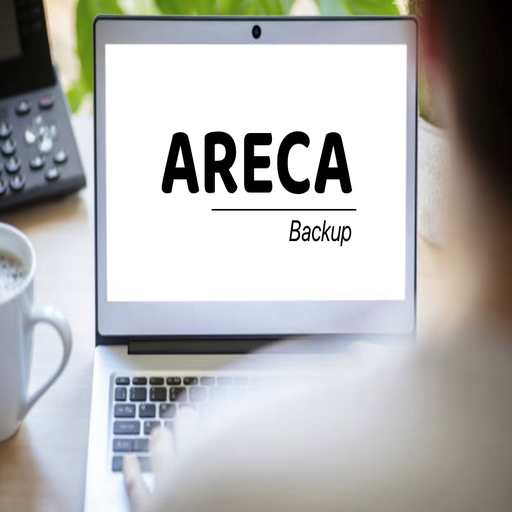Areca Backup: Transparent File Archiving with Versioning and Encryption
Areca Backup is a file-level backup utility designed for users who want full control over what gets backed up, where it goes, and how it’s stored. Unlike tools that hide logic behind wizards, Areca gives visibility into every operation — from file selection to retention and encryption.
It’s particularly well-suited for IT pros managing user data, archived documents, or source files where versioning and portability matter more than bare-metal recovery.
Core Strengths of Areca
| Feature | Why It’s Valuable |
| Delta Backup | Only saves modified parts of files, reducing storage usage. |
| Archive Encryption | AES-128 and AES-256 encryption for secure backups. |
| Built-in Compression | Option to compress archive content using ZIP or ZIP64. |
| Versioning Support | Retain multiple versions of files across backup sessions. |
| Restore by Date or Version | Allows point-in-time recovery or rollback to older versions. |
| Command-Line Mode | Supports full automation and scripting in IT workflows. |
| Backup Reports | Generates detailed HTML or TXT logs for auditing. |
| Preview & Simulation | Test what a backup or restore will do — before committing. |
How It’s Typically Used
Areca is often deployed in environments where transparency and long-term archiving are critical. It’s a strong fit for:
– Workstation file protection in environments without centralized backup software
– Software development or CAD teams needing multiple file versions
– Highly regulated environments requiring encrypted and logged file movement
– Backup to removable drives for air-gapped or offline retention
– Manual archive rotation by IT staff on shared endpoints
Installation and Configuration Flow
1. Download the latest Areca release from the official site (Windows and Linux supported).
2. Create a Backup Group — each group is a task with its own rules and target.
3. Select Source Folders — local or network paths are supported.
4. Choose Archive Type — standard, compressed, or encrypted.
5. Set Retention Rules — define how many versions to keep and whether to purge obsolete files.
6. Run Manually or Schedule — via Task Scheduler or custom scripts.
Backups can be restored via GUI or CLI, and individual files can be previewed inside the archive before extraction.
Known Tradeoffs
– No system imaging or full disk backup — strictly file-level
– Not beginner-friendly: interface and terminology may overwhelm casual users
– Requires manual setup for scheduling or rotation (no built-in automation)
– Doesn’t support cloud destinations — local, USB, and network paths only
– Performance on large datasets can be modest without tuning
Why Admins Still Use It
Areca Backup appeals to admins who value clarity, control, and auditability over glossy interfaces. It’s a tool that assumes the user knows what they want — and then gives them granular control to achieve it. For selective backups, portable encryption, and multi-version file archives, it remains a solid, open-source option worth keeping in the toolbox.







